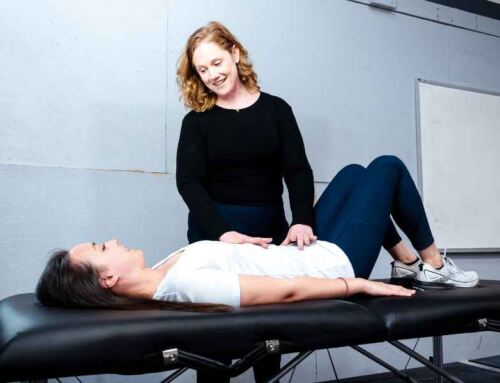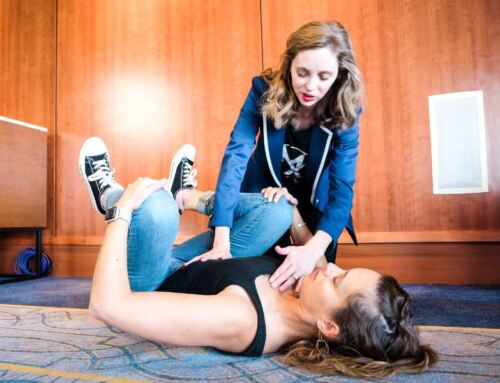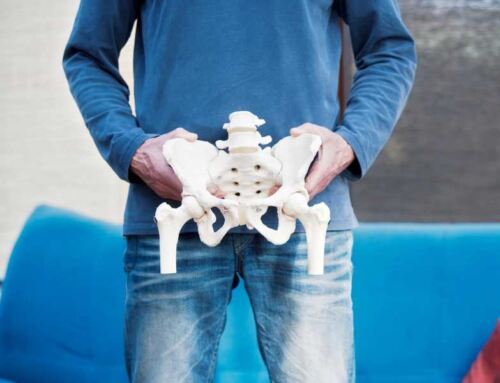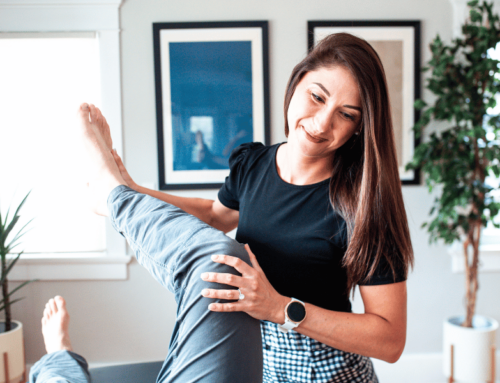Healthy Habits for Healthy Bowels: A Pelvic Floor PT Guide to Constipation
We are currently in the process of potty training our toddler, so I have been talking to a lot of my mom friends about the bathroom. One of the main issues my friends here in Billings, MT have told me they face is constipation.
“My daughter doesn’t like pooping on the potty.”
“My son has to push really hard to poop and he says it hurts.”
“My child’s bowel habits have changed.”
These conversations sound very familiar to me. They are issues I hear from many of my clients.
As a pelvic floor physical therapist in Billings, I help people with issues they typically don’t like to talk about in public: incontinence, pain during intercourse, constipation, painful pelvic exams, etc. However, when it comes to our children, conversations about peeing and pooping seem natural.
This blog post is meant to flip the script on those uncomfortable conversations to help you navigate difficulties you may face with pooping and easy modifications you can make in your daily life to make this (very natural) activity easier and less of a burden. The way we sit on the toilet, our posture, and various lifestyle factors can significantly impact our digestive health as well as our bowel movements.

Optimal Toileting Posture: More Than Just Sitting
Sitting on the toilet may seem like a straightforward task, but adopting optimal posture can improve the ease of having a bowel movement as well as the comfort. As a pelvic floor PT in Billings, I encourage my clients to sit on the toilet with a relaxed, upright posture. While it may be tempting to hover, squatting over a toilet increases the strain on the pelvic floor, limiting the muscles’ ability to relax. Placing a stool under the feet so the knees are above the hips, keeping the knees apart, and leaning forward slightly helps the pelvic floor relax and places the coccyx (tailbone) in the proper position to allow for improved ease of defecation.
The Power of Relaxation: Easing Your Pelvic Floor
The key to a comfortable bowel movement is to relax the pelvic floor rather than strain or push. Long term straining and pushing can weaken the pelvic floor muscles and increase muscle tension. To relax your pelvic floor, I teach my clients proper diaphragmatic breathing (belly breathing) to help make the process smoother and more natural. Proper breathing techniques decrease pressure of the pelvic floor leading to a more comfortable bowel movement.
Hydration and Fiber: Essentials for Soft Stool
Staying hydrated is crucial for overall health. It also plays a role in maintaining soft stool. I recommend my clients drink their weight in fluid ounces to maintain proper hydration.
Fiber intake is also a vital component in managing constipation and promoting a healthy pelvic floor. There are two types of fiber—soluble and insoluble. Foods like oats, beans, apples, citrus fruits, carrots, barley, and peas contain soluble fiber, which forms a gelatinous bulk to lower cholesterol. Insoluble fiber, found in whole wheat flour and bread, wheat bran, nuts, beans, cauliflower, green beans, and potatoes, adds bulk to stool. Both types are needed to prevent constipation or GI distress (which can, in turn, lead to tension in the pelvic floor, making GI symptoms worse). For women under 50, a daily intake of 25g of fiber (soluble and insoluble) is recommended. Gradually increase fiber intake to avoid bloating and gas.
Time Management: Healthy Habits on the Toilet
Spending too much time on the toilet can exacerbate pelvic floor tightness and lead to weakness so I encourage clients to limit their bowel movement time to 5-10 minutes at a time. If unsuccessful, take a break and try again later.

Stretching for Success: Pelvic Floor Exercises
Incorporating certain stretches into your routine can help decrease tension in the pelvic floor. Exercises like child’s pose, happy baby, hip adductor stretches, and piriformis stretches help target various muscles of the pelvic floor and are beneficial in maintaining pelvic floor health. These can be further individualized by seeing a pelvic floor PT.
Your Journey to Better Health: How a Pelvic PT Can Help
A dedicated pelvic floor physical therapist at MovementX in Billings offers personalized interventions to effectively address pelvic floor tension and enhance the ease of bowel movements. During your assessment with your pelvic floor PT, a comprehensive movement-based evaluation will be conducted to identify the underlying causes of your constipation. In some cases, clients may find value in consenting to an internal pelvic examination, allowing for a thorough assessment of pelvic floor muscle mobility, tension, and strength.
Beyond focusing solely on the pelvic floor, the assessment encompasses a full body evaluation–including hip, rib cage, and spinal mobility, flexibility, posture, joint range of motion, and strength deficits, all of which can contribute to difficulties in defecation. Your pelvic floor PT will delve into your medical and surgical history, toileting habits, nutrition intake, and physical activity, creating a holistic understanding of your condition.
Once the factors contributing to your constipation are identified, your pelvic floor PT will transparently explain their findings and outline the rationale behind recommended treatments. A range of interventions may be employed, including soft tissue mobilization, dry needling, joint mobilization, stretching, strengthening exercises, postural modifications, adjustments to daily activities, and trigger point release.

To empower your at-home care and prevent the recurrence of the condition, your pelvic floor PT might suggest the use of a specialized medical device such as a pelvic wand or dilator. This comprehensive approach ensures that you receive tailored care addressing the root causes of your constipation, promoting independence, improved pelvic floor health and overall well-being.
Many of the strategies identified above are recommended when we start potty training our children. By applying these simple strategies into our daily lives, we are decreasing pressure on our pelvic floor, taking care of our digestive health, and improving our overall well-being—and your pelvic floor PT at MovementX in Billings makes this possible without leaving the comforts of your house!








